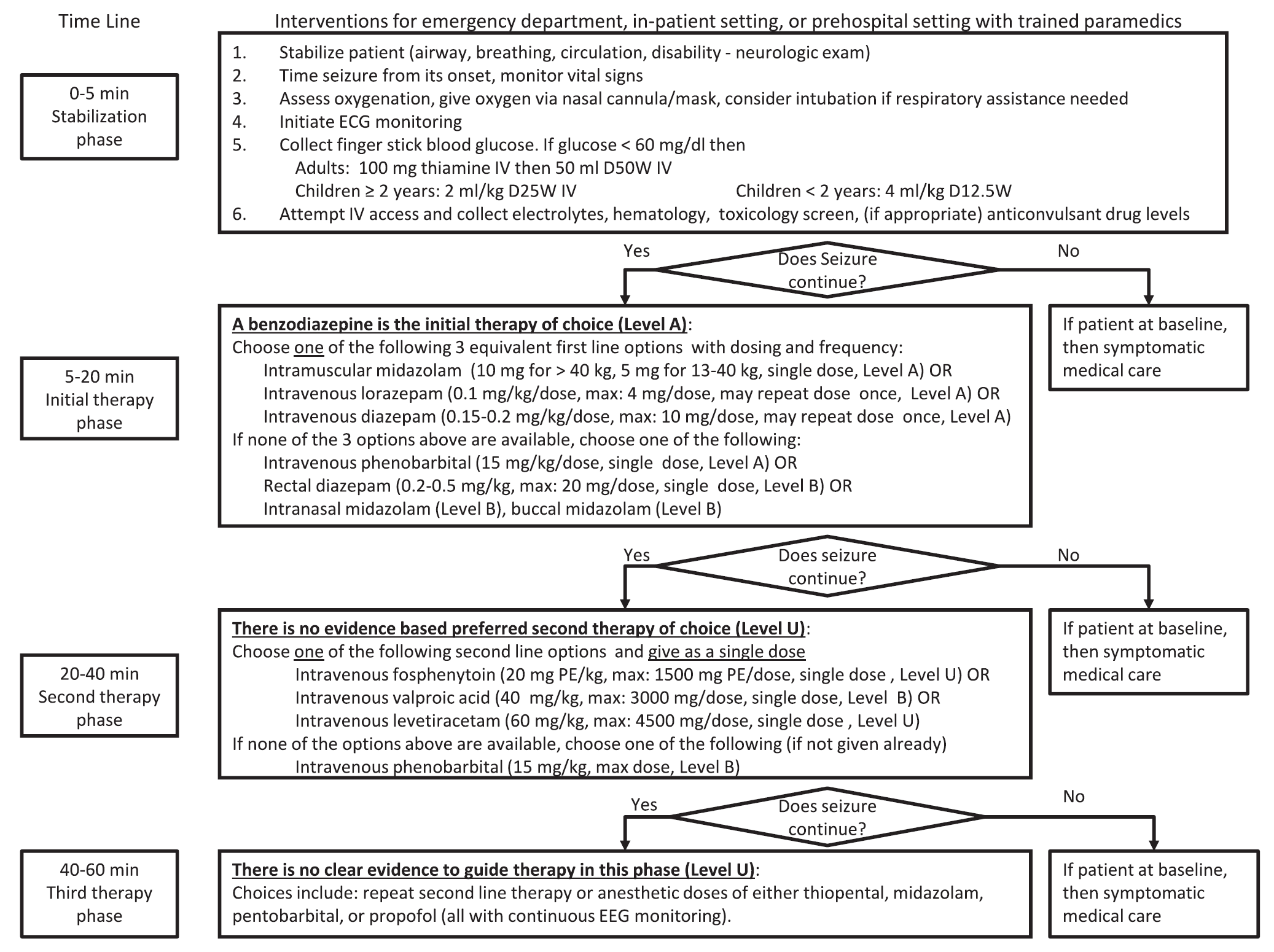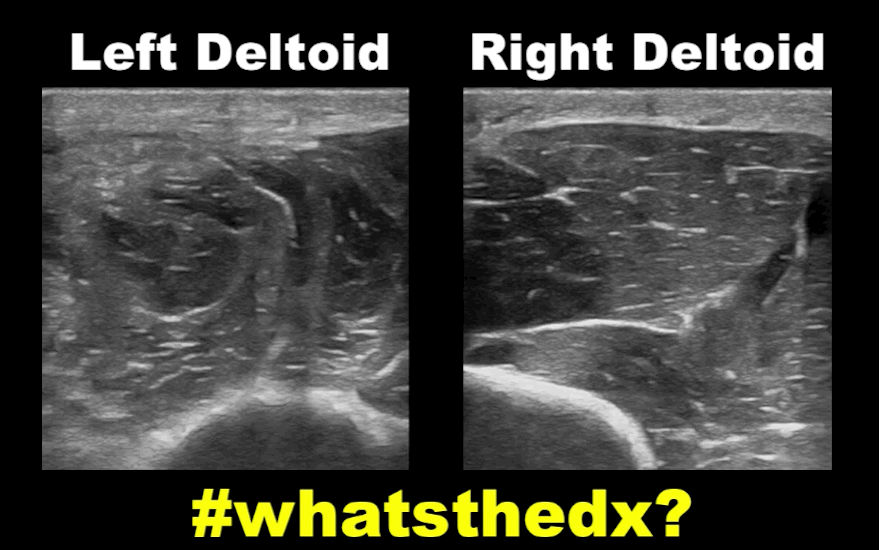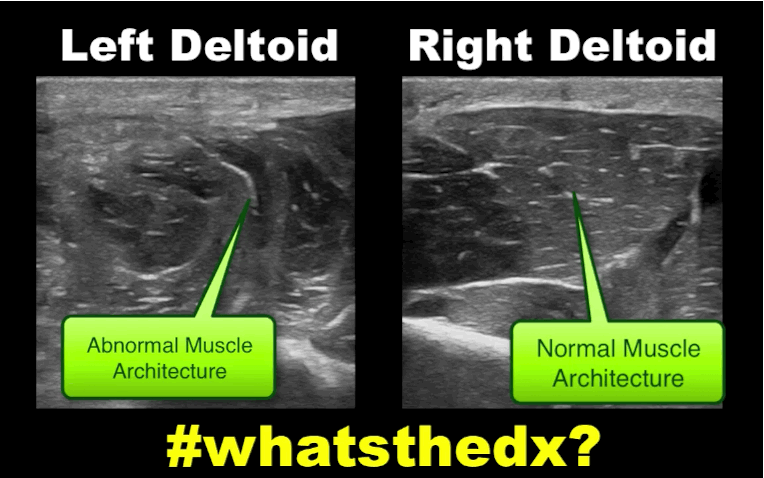Category: Orthopedics
Keywords: osteoarthritis, nsaids (PubMed Search)
Posted: 3/20/2016 by Michael Bond, MD
(Updated: 12/14/2025)
Click here to contact Michael Bond, MD
A meta-analysis of 74 randomized trials with a total of 58,556 patients was recently published in the Lancet that looked at the effectiveness of NSAIDs in the treatment of osteoarthritis (OA) pain.
Briefly, their conclusion was that:
You can find the article here http://www.thelancet.com/journals/lancet/article/PIIS0140-6736%2816%2930002-2/abstract
Category: Pediatrics
Keywords: End tidal capnography, diabetic ketoacidosis (PubMed Search)
Posted: 3/19/2016 by Jenny Guyther, MD
Click here to contact Jenny Guyther, MD
A previous pearl has looked at serum HCO3 as a predictor of DKA (see pearl from 8/21/15). The article by Gilhotra looks at using end tidal CO2 (ETCO2) to exclude DKA. 58 pediatric patients were enrolled with 15 being in DKA. No patient with ETCO2 > 30 mmHg had DKA. Six patients with ETCO2 < 30 mmHg did not have DKA. Other studies done in children have shown similar results.
An article recently published by Chebl and colleagues examined patients older than 17 years with hyperglycemia. In this study, 71 patients were included with 32 having DKA. A ETCO2 >35 excluded DKA in this group while a level <22 was 100% specific for DKA.
Bottom line: ETCO2 >35 mmHg is a quick bedside test that can aid in the evaluation of hyperglycemic patients.
Gilhotra Y and Porter P. Predicting diabetic ketoacidosis in children by measuring end-tidal CO2 by non-invasive nasal capnography. J Paediatr Child Health 2007; 43 (10): 677-80.
Chebl BR, Madden B, Belsky J, Harmouche E, Yessayan L. Diagnostic value of end tidal capnography in patients with hyperglycemia in the emergency department. BCM Emerg Med 2016: 16 (1).
Category: Infectious Disease
Keywords: Rash, Cutaneous larva migrans, nematode, tropics (PubMed Search)
Posted: 3/16/2016 by Jon Mark Hirshon, PhD, MPH, MD
Click here to contact Jon Mark Hirshon, PhD, MPH, MD
Cutaneous larva migrans (CLM) is an acquired dermatosis
Clinical manifestations:
Treatment:
Bottom Line:
http://emedicine.medscape.com/article/1108784-clinical
http://www.cdc.gov/parasites/zoonotichookworm/gen_info/faqs.html
https://cid.oxfordjournals.org/content/30/5/811.full
Category: Critical Care
Keywords: Pharmacology, Hypertension, Vasoactive (PubMed Search)
Posted: 3/15/2016 by Daniel Haase, MD
Click here to contact Daniel Haase, MD
There are multiple vasoactive infusions available for acute hypertensive emergencies, many having serious side effect profiles or therapeutic disadvantages.
Clevidipine (Cleviprex) is rapidly-titratable, lipid-soluable dihydropyridine calcium channel blocker which has become increasingly used in the ICU in recent years [1]:
ECLIPSE trial compares clevidipine, nicardipine, nitroglycerin and nitroprusside in cardiac surgery patients. .
Clevidipine was as effective as nicardipine at maintaining a pre-specified BP range, but superior when that BP range was narrowed (also studied in ESCAPE-1 and ESCAPE2 with similar results) [2-3]
TAKE-HOME: Clevidipine is an ultra short-acting, rapidly-titratable vasoactive with favorable cost, pharmacokinetics, and side-effect profile. Consider its use in hypertensive emergencies.
1. Lexicomp (accessed via UpToDate on 3/15/2016)
2. Aronson S, Dyke CM, Stierer KA, et al, "The ECLIPSE Trials: Comparative Studies of Clevidipine to Nitroglycerin, Sodium Nitroprusside, and Nicardipine for Acute Hypertension Treatment in Cardiac Surgery Patients," Anesth Analg, 2008, 107(4):1110-21.
3. ESCAPE-2 Study Group.Treatment of acute postoperative hypertension in cardiac surgery patients: an efficacy study of clevidipine assessing its postoperative antihypertensive effect in cardiac surgery-2 (ESCAPE-2), a randomized, double-blind, placebo-controlled trial.Anesth Analg. 2008 Jul;107(1):59-67.
Category: Orthopedics
Keywords: X-ray, Hip pain (PubMed Search)
Posted: 3/12/2016 by Brian Corwell, MD
Click here to contact Brian Corwell, MD
Femoral neck fracture
We typically think of the presentation of the displaced fracture severe pain, writhing in the bed, unable to ambulate, limited ROM
* However, patients with nondisplaced fractures (15 20%) may walk with a limp
* Occurs primarily in the elderly & osteoporotic population after a fall directly onto the hip
* Look for a cortical step-off in the femoral neck (w/ foreshortening)
* A patient with a minimally displaced fracture may only complain of hip, knee, or groin pain and may be able to walk (albeit with a limp)
* Almost 9% of hip fractures are radiographically normal (Nondisplaced or impacted fractures)
* Fractures which were initially nondisplaced, may become displaced upon re-presentation
* Remember the limitations of plain x-ray in the evaluation of femoral neck fractures!
* Because of the significant complication of overlooking a femoral neck fracture, MRI has become the recommended imaging modality of choice for a patient with a high suspicion for a femoral neck fracture, despite normal plain radiographs of the hip
Category: Toxicology
Keywords: cocaine, toxicity, cardiovascular (PubMed Search)
Posted: 3/9/2016 by Bryan Hayes, PharmD
(Updated: 3/12/2016)
Click here to contact Bryan Hayes, PharmD
Acute cocaine toxicity can manifest with several cardiovascular issues such as tachycardia, dysrhythmia, hypertension, and coronary vasospasm. A new systematic review collated all of the available evidence for potential treatment options. Here is what the review found (there is also an 'other agents' section for medications with less published reports):
Benzodiazepines and other GABA-active agents: Benzodiazepines may not always effectively mitigate tachycardia, hypertension, and vasospasm from cocaine toxicity.
Calcium channel blockers: Calcium channel blockers may decrease hypertension and coronary vasospasm, but not necessarily tachycardia.
Nitric oxide-mediated vasodilators: Nitroglycerin may lead to severe hypotension and reflex tachycardia.
Alpha-adrenoceptor blocking drugs: Alpha-1 blockers may improve hypertension and vasospasm, but not tachycardia, although evidence is limited.
Alpha-2-adrenoceptor agonists: There were two high-quality studies and one case report detailing the successful use of dexmedetomidine.
Beta-blockers and alpha/beta-blockers: No adverse events were reported for use of combined alpha/beta-blockers such as labetalol and carvedilol, which were effective in attenuating both hypertension and tachycardia.
Antipsychotics: Antipsychotics may improve agitation and psychosis, but with inconsistent reduction in tachycardia and hypertension and risk of extrapyramidal adverse effects.
Sodium bicarbonate: Twelve case reports documented treatment of dysrhythmia with IV sodium bicarbonate, with seven reporting successful termination.
The authors note that "publication bias is a concern, and it is possible that successful treatment and/or adverse events have not been reported in some of the publications, and in general."
Richard JR, et al. Treatment of cocaine cardiovascular toxicity: a systematic review. Clin Toxicol. 2016 Feb 26:1-20. [Epub ahead of print] [PMID 26919414]
Follow me on Twitter (@PharmERToxGuy)
Category: Neurology
Keywords: Up-gaze paresis, ophthalmoparesis, hydrocephalus, shunt malfunction (PubMed Search)
Posted: 3/9/2016 by WanTsu Wendy Chang, MD
Click here to contact WanTsu Wendy Chang, MD
Sunset Eye Sign
Category: Critical Care
Posted: 3/8/2016 by Haney Mallemat, MD
Click here to contact Haney Mallemat, MD
Follow me on Twitter (@criticalcarenow)
Category: Pharmacology & Therapeutics
Keywords: status epilepticus (PubMed Search)
Posted: 3/3/2016 by Bryan Hayes, PharmD
(Updated: 3/5/2016)
Click here to contact Bryan Hayes, PharmD
A new guideline for convulsive status epilepticus in adults AND children was recently published. [1] An insightful commentary was published alongside it (both are open access). [2] The proposed algorithm is below. Here are a few additional points to note:

Follow me on Twitter (@PharmERToxGuy)
Category: Toxicology
Keywords: Fentanyl, W-18, Clandestine (PubMed Search)
Posted: 3/4/2016 by Kathy Prybys, MD
Click here to contact Kathy Prybys, MD
Pure opioid agonists such as Morphine, Hydromorphone, and Fentanyl stimulate opioid receptors and are the most potent analgesics. Fentanyl and fentanyl analogues are up to 100 times more powerful than morphine and 30-50 times more powerful than heroin.
W-18 is a highly potent opioid agonist with a distinctive chemical structure which is not closely related to older established families of opioid drugs. While Fentanyl is approximately 100 times more powerful than Morphine, W-18 is about 100 times more powerful than Fentanyl.
Increases in Drug and OpioidOerdose Deaths-United States. 2000-2014. Rudd RA, et al. MMWR Morb Mortal Wkly Rep. 2016 Jan 1;64(50-51):1378-82.
Increases in fentanyl drug confiscations and fentanyl-related overdose fatalities. CDC. HAN Health Advisory. Atlanta, GA: US Department of Health and Human Services, CDC; 2015.
W-18, a synthetic opiate 100 times more potent than fentanyl. The Poison Review February 2016
Category: International EM
Keywords: Infectious diseases, influenza (PubMed Search)
Posted: 3/2/2016 by Jon Mark Hirshon, PhD, MPH, MD
Click here to contact Jon Mark Hirshon, PhD, MPH, MD
While the flu season this year has been mild, it is still important to recognize which patients are at high risk for flu-related complications:
During the influenza season, when admitting a patient who 1) has respiratory symptoms and 2) is at high risk for influenza complications, consider testing them for influenza.
http://www.cdc.gov/flu/about/disease/high_risk.htm
Category: Critical Care
Keywords: ARDS (PubMed Search)
Posted: 3/1/2016 by Feras Khan, MD
Click here to contact Feras Khan, MD
Category: Visual Diagnosis
Posted: 2/29/2016 by Haney Mallemat, MD
Click here to contact Haney Mallemat, MD
19 year-old male complaining of left arm pain one week after injecting anabolic steroids into his shoulder. What's the diagnosis?

Myositis of the deltoid muscle

Follow me on Twitter (@criticalcarenow)
Category: Orthopedics
Keywords: Achilles tendon rupture (PubMed Search)
Posted: 2/27/2016 by Brian Corwell, MD
Click here to contact Brian Corwell, MD
Achilles tendon rupture
More common in
men, ages 30 - 40yo, s/p steroid injections, fluoroquinolone use, and episodic athletes "weekend warriors
Mechanism: usually during an athletic endeavor, sudden forced planar flexion or violent dorsiflexion of a plantar flexed foot
Location: Usually occurs 4 to 6 cm ABOVE the Achilles calcaneal insertion (hypovascular region)
Patient will report a sudden pop, gunshot like sound
History: Will report heel and calf pain and weakness/inability to walk
Physical examination: Palpable gap, weakness with plantar flexion, + Thompsons test
https://www.netterimages.com/images/vpv/000/000/007/7714-0550x0475.jpg
Consult orthopedics and splint in resting equinus
http://img.medscape.com/fullsize/migrated/408/535/mos0216.01.fig5b.jpg
Category: Pediatrics
Posted: 2/26/2016 by Mimi Lu, MD
(Updated: 2/27/2016)
Click here to contact Mimi Lu, MD
Perianal Group A Strep is an infectious dermatitis seen in the perianal region that is caused by Group A beta-hemolytic Strep. Children will have a characteristic rash with a sharply-demarcated area of redness, swelling, and irritation around the perianal region. There may be associated swelling and irritation of the vulva and vagina (in girls) and penis in boys. Patients can have bleeding or itching during bowel movements.
The age range is often <10 years of age. There is often an absence of fever or other systemic symptoms.The diagnosis can be confirmed by obtaining a Rapid Strep swab from the area of interest. You can also collect a bacterial culture of the area.
Treatment requires a 14 day course of penicillin. Amoxicillin (40 mg/kg/day divided TID) and clarithromycin are alternative treatments. The additional of topical bactroban (mupirocin) can be effective, but it should not be used as monotherapy. Re-occurrence is common, so close follow-up is key.
Category: Neurology
Keywords: pseudoseizures, EEG, somatoform, psychiatric (PubMed Search)
Posted: 2/24/2016 by Danya Khoujah, MBBS
Click here to contact Danya Khoujah, MBBS
Chen DK and LaFrance WC. Diagnosis and Treatment of Nonepileptic Seizures. Continuum 2016;22(1):116 131
Category: Critical Care
Posted: 2/24/2016 by Mike Winters, MBA, MD
Click here to contact Mike Winters, MBA, MD
Sepsis-3
Singer M, et al. The Third International Consensus Definitions for Sepsis and Septic Shock (Sepsis-3). JAMA 2016; 315:801-10.
Category: Toxicology
Keywords: colchicine toxicity (PubMed Search)
Posted: 2/19/2016 by Hong Kim, MD
Click here to contact Hong Kim, MD
Colchicine is an alkaloid compound found in Colchicum autumnale that is often mistaken by foragers as wild garlic (Allium ursinum). Unintentional ingestion wild garlic or therapeutic misadventures among elderly population with history of gout often result in unintentional toxicity.
It is a potent inhibitor of microtubule formation and function involved in cell division and intracellular transport mechanism. Thus toxicity is related to diffuse cellular dysfunction of all major organs and results in significant morbidity and mortality.
Colchicine toxicity occurs in three phases:
| Phase | Time | Signs and symptoms | Therapy |
| I | 0 – 24 hr | · Nausea, vomiting, diarrhea · Salt and water depletion · Leukocytosis | · Antiemetic · GI decontamination · IV fluids · Observation for leukopenia |
| II | 1 – 7 days | · Sudden cardiac death (24 – 48 hr) · Pancytopenia · Acute kidney injury · Sepsis · Acute respiratory distress syndrome · Electrolyte imbalance · Rhabdomyolysis | · Resuscitation · G-CSF · Hemodialysis · Antibiotics · Mechanical ventilation · Electrolyte repletion |
| III | >7 days | · Alopecia (2-3 weeks later) · Myopathy, neuropathy, myoneuropathy. |
|
Management
Category: Pediatrics
Keywords: UTI, fever, infant (PubMed Search)
Posted: 2/19/2016 by Jenny Guyther, MD
Click here to contact Jenny Guyther, MD
There is not much data published on susceptabilities of urinary pathogens in infants. What resistance patterns are seen in infants < 2 months in gram negative uropathogens?
A retrospective study of previously healthy infants diagnosed with urinary tract infections in Jerusalem over a 6 year period examined this question. The standard treatment at this hospital included ampicillin and gentamycin for less than 1 month olds and ampicillin or cefuroxime for 1-2 month olds.
306 UTIs were diagnosed
74% were resistant to ampicillin
22% were resistant to cefazolin and augmentin
8% were resistant to cefuroxime
7% were resistant to gentamycin
Of the organisms cultured, 76% were E. coli and 14% were Klebsiella.
Bottom line: Know your local resistance patterns.
Segal Z et al. Infants under two months of age with urinary tract infections are showing increasing resistance to empirical and oral antibiotics. Acta Paediatrica. Dec 2015. Epub ahead of print.
Category: International EM
Keywords: Dengue, Hemorrhagic Fever, arbovirus, flavivirus (PubMed Search)
Posted: 2/18/2016 by Jon Mark Hirshon, PhD, MPH, MD
Click here to contact Jon Mark Hirshon, PhD, MPH, MD
What are the criteria for dengue hemorrhagic fever?
